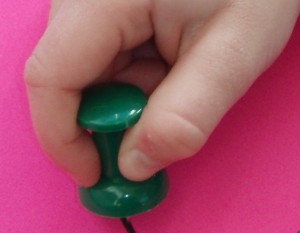I recently moved and this necessitated a major purging of 30 years. As I tunneled into my children’s closets, it broke my heart to toss the piles of Montessori “Push Pin” maps of the world, the continents and all the states in the US of A. I still marvel at the brilliance of Maria Montessori, and her understanding of child development.
I humbly borrowed this activity and have found it invaluable in my practice. “Push Pins” is the absolute best activity to develop the muscles necessary for the correct pencil grip. Even little boys, who HATE holding a pencil, enjoy this challenging but fun task.
Benefits:
- When the push pin is held correctly, the muscles required for grasping a pencil are strengthened.
- Both hands are used, thereby building the habit to use two hands while working.
- Visual attention is required to make sure the pin is exactly on the line.
- Dots should be close together, so simple spatial planning/reasoning is required.
- If the child lies on a carpet, trunk and limb muscles get stronger too.
Directions:
1. Draw a simple shape or design to be “pushed” out.
2. If working at a table, place a pot holder under the piece of paper. If working on a carpet- the paper can be placed directly on the carpet.
3. The non-dominant hand holds the paper down. The dominant hand holds the pin in a tripod grasp.
The picture below illustrates EXACTLY the way the pin should be held. If it is not held this way then the correct muscles are not getting strengthened. For children with very weak hands, I give support to the thumb by placing my finger gently in the web space (between the thumb and index finger).
4. The pin pricks small holes along the designated line(s). 1/8-1/16 inch spacing is ideal.
5. After the design is fully “pinned,” an adult should then complete pushing the shape or design out along the perforated line.
